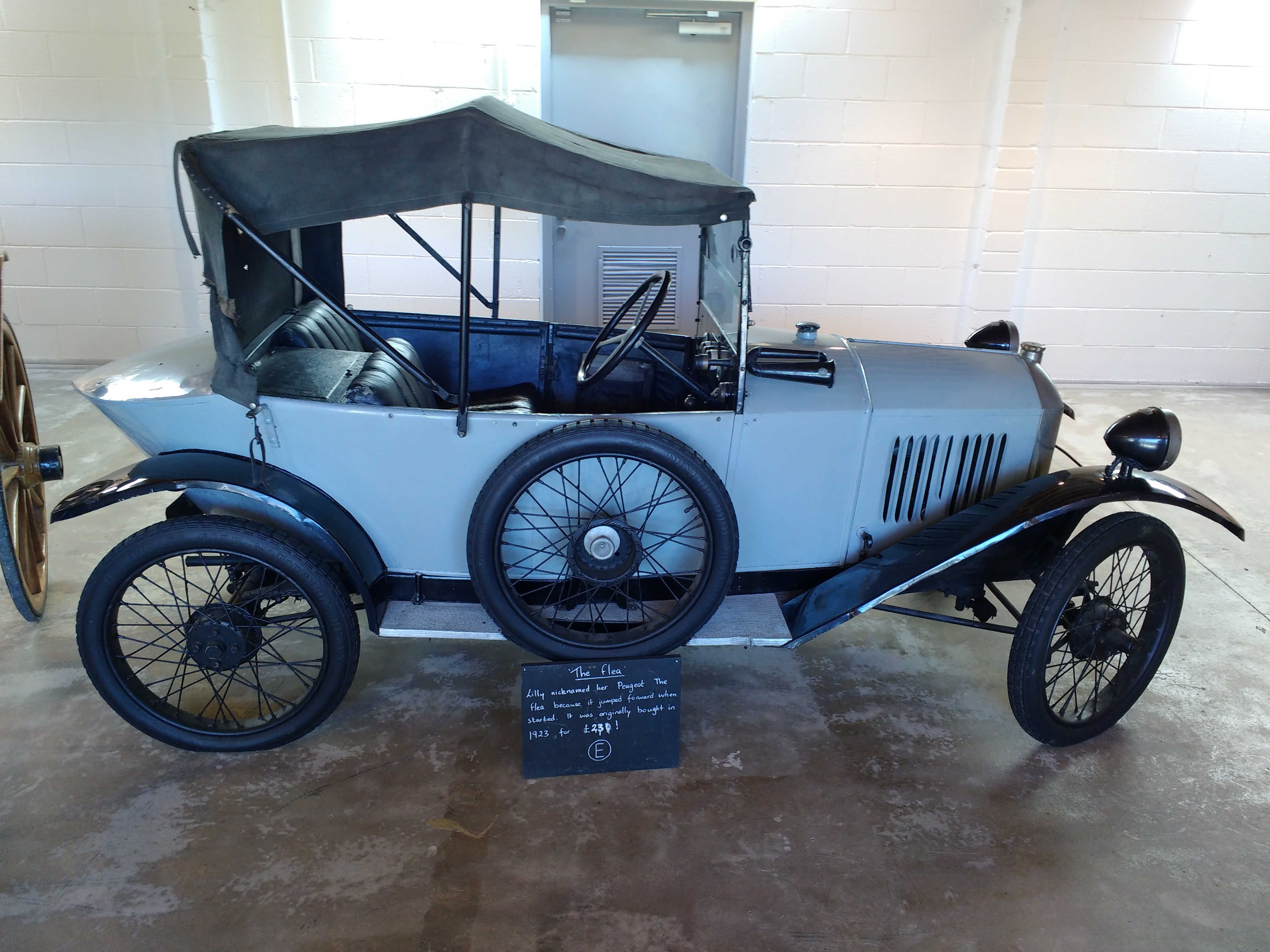Peugeot Quadrilette on:
[Wikipedia]
[Google]
[Amazon]
Peugeot Quadrilette is the popular name for the Peugeot Type 161 and Peugeot Type 172 and associated models produced between 1921 and 1924.
 Modifications to the Quadrilette in 1923 resulted in the Type 172. launched during the course of 1924. The track was widened so that the two seats could be placed abreast, improving comfort and space. Though the wheelbase was shortened, luggage room was more plentiful because there were no longer two rows of seats. The engine remained the same and weight was kept low. Upgraded versions of the Type 172, such as the Type 172 BC and Type 172 BS also known as the Quadrilette Grand Sport, launched during the course of 1924, had an enlarged 720 cc side-valve engine with slightly more power.
Modifications to the Quadrilette in 1923 resulted in the Type 172. launched during the course of 1924. The track was widened so that the two seats could be placed abreast, improving comfort and space. Though the wheelbase was shortened, luggage room was more plentiful because there were no longer two rows of seats. The engine remained the same and weight was kept low. Upgraded versions of the Type 172, such as the Type 172 BC and Type 172 BS also known as the Quadrilette Grand Sport, launched during the course of 1924, had an enlarged 720 cc side-valve engine with slightly more power.
1920: QUADRILETTEPeugeot Car Models from 1910 to 1949
https://web.archive.org/web/20081116094756/http://quadrilette.reseaulocal.fr/ {{Peugeot historic timeline Quadrilette Cars introduced in 1921
Type 161
Peugeot
Peugeot (, , ) is a French brand of automobiles owned by Stellantis.
The family business that preceded the current Peugeot companies was founded in 1810, with a steel foundry that soon started making hand tools and kitchen equipment, and the ...
created the Type 161 to reverse its financial woes following the Great War
World War I (28 July 1914 11 November 1918), often abbreviated as WWI, was one of the deadliest global conflicts in history. Belligerents included much of Europe, the Russian Empire, the United States, and the Ottoman Empire, with fightin ...
. It was a cheap, practical, very small economy car and was nicknamed the Quadrilette when shown at the 1920 Brussels
Brussels (french: Bruxelles or ; nl, Brussel ), officially the Brussels-Capital Region (All text and all but one graphic show the English name as Brussels-Capital Region.) (french: link=no, Région de Bruxelles-Capitale; nl, link=no, Bruss ...
Motor Show. It was available for sale in 1921. In order to put it into the minimal tax bracket—that of cyclecar
A cyclecar was a type of small, lightweight and inexpensive car manufactured in Europe and the United States between 1910 and the early 1920s. The purpose of cyclecars was to fill a gap in the market between the motorcycle and the car. A key ...
s, for which the tax was 100 francs
The franc is any of various units of currency. One franc is typically divided into 100 centimes. The name is said to derive from the Latin inscription ''francorum rex'' (King of the Franks) used on early French coins and until the 18th centu ...
annually—the 4-cycle, 4-cylinder water-cooled engine displaced a mere 667 cc and produced . Taking advantage of this small power output was a very lightweight body, under . The vehicle's width was so diminutive that the two seats were placed in tandem, not side by side. Later in 1921, the Type 161E was introduced with side-by-side seats, the passenger seat slightly back to allow the driver room to operate the pedals. The car retailed for 9,900 francs with top, acetylene lights, and spare tire, 9,400 francs without. Fuel economy was highly impressive at 5.0 L/100 km (45 miles per US gallon or 56 miles per Imperial gallon). Top speed was .
Type 172
 Modifications to the Quadrilette in 1923 resulted in the Type 172. launched during the course of 1924. The track was widened so that the two seats could be placed abreast, improving comfort and space. Though the wheelbase was shortened, luggage room was more plentiful because there were no longer two rows of seats. The engine remained the same and weight was kept low. Upgraded versions of the Type 172, such as the Type 172 BC and Type 172 BS also known as the Quadrilette Grand Sport, launched during the course of 1924, had an enlarged 720 cc side-valve engine with slightly more power.
Modifications to the Quadrilette in 1923 resulted in the Type 172. launched during the course of 1924. The track was widened so that the two seats could be placed abreast, improving comfort and space. Though the wheelbase was shortened, luggage room was more plentiful because there were no longer two rows of seats. The engine remained the same and weight was kept low. Upgraded versions of the Type 172, such as the Type 172 BC and Type 172 BS also known as the Quadrilette Grand Sport, launched during the course of 1924, had an enlarged 720 cc side-valve engine with slightly more power.
Production
Total figures for the Quadrilette amounted to 12,305 over three years, which was 31% of Peugeot's vehicle production for that time period. Confusingly, models of the Type 172 were attached both to the Quadrilette's nameplate and to that of its successor, the Peugeot 5CV. The Quadrilette and 5CV were sold side by side in 1924, after which Quadrilette production ceased. __NOTOC__References
1920: QUADRILETTE
https://web.archive.org/web/20081116094756/http://quadrilette.reseaulocal.fr/ {{Peugeot historic timeline Quadrilette Cars introduced in 1921